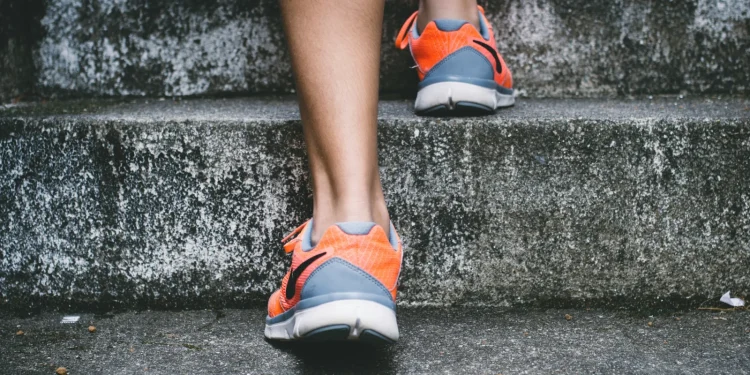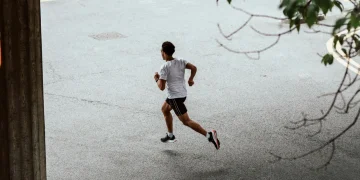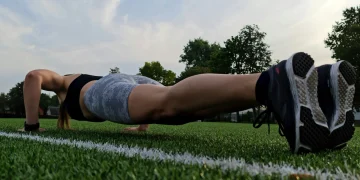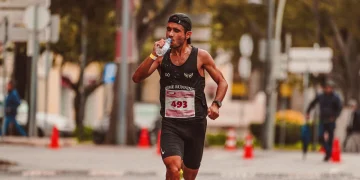A responsive foot plays a key role in running performance. When the arch remains firm and doesn’t collapse much during the stance or absorption phase, it helps limit excess movement in the ankle, knee, and hip. If the arch then springs back quickly during the push-off phase, runners can maintain a higher stride rate, leading to faster overall pacing.
Many amateur runners – especially those training for marathons or ultramarathons – don’t include enough variety in their training to build a strong, reactive foot. Rather than following a balanced 80/20 training model (80% easy running, 20% focused quality work), they tend to skew toward 90/10 or do mostly easy running. Even when quality sessions are included, they often lack the speed necessary to train a reactive lower leg.
To unlock more potential, runners should aim to become more athletic by safely incorporating sprint strides and short plyometric drills. This type of training is common among elite marathoners and can benefit runners of all levels and distances by raising performance limits.
If these movements feel intimidating, start with basic foot and lower-leg strengthening exercises. Eventually, work toward adding an “Athletic Day” into your weekly routine.
Athletic Day
Warm-Up
Jog easily for 5–15 minutes, followed by light static stretches in any tight areas.
Drills
Do exercises like leg swings, butt kicks, A-skips, B-skips, high skips, long skips, tuck jumps, and butt-kick jumps. Keep the focus on fast ground contact and quick transitions.
Strides
Run 2–8 strides of 80–100 meters, with only the middle 20 meters done at full speed (imagine running across hot coals!). Take full recovery between strides so you can focus on speed, quick turnover, and staying relaxed.
Cool-Down
Finish with another 5–15 minutes of easy jogging.






